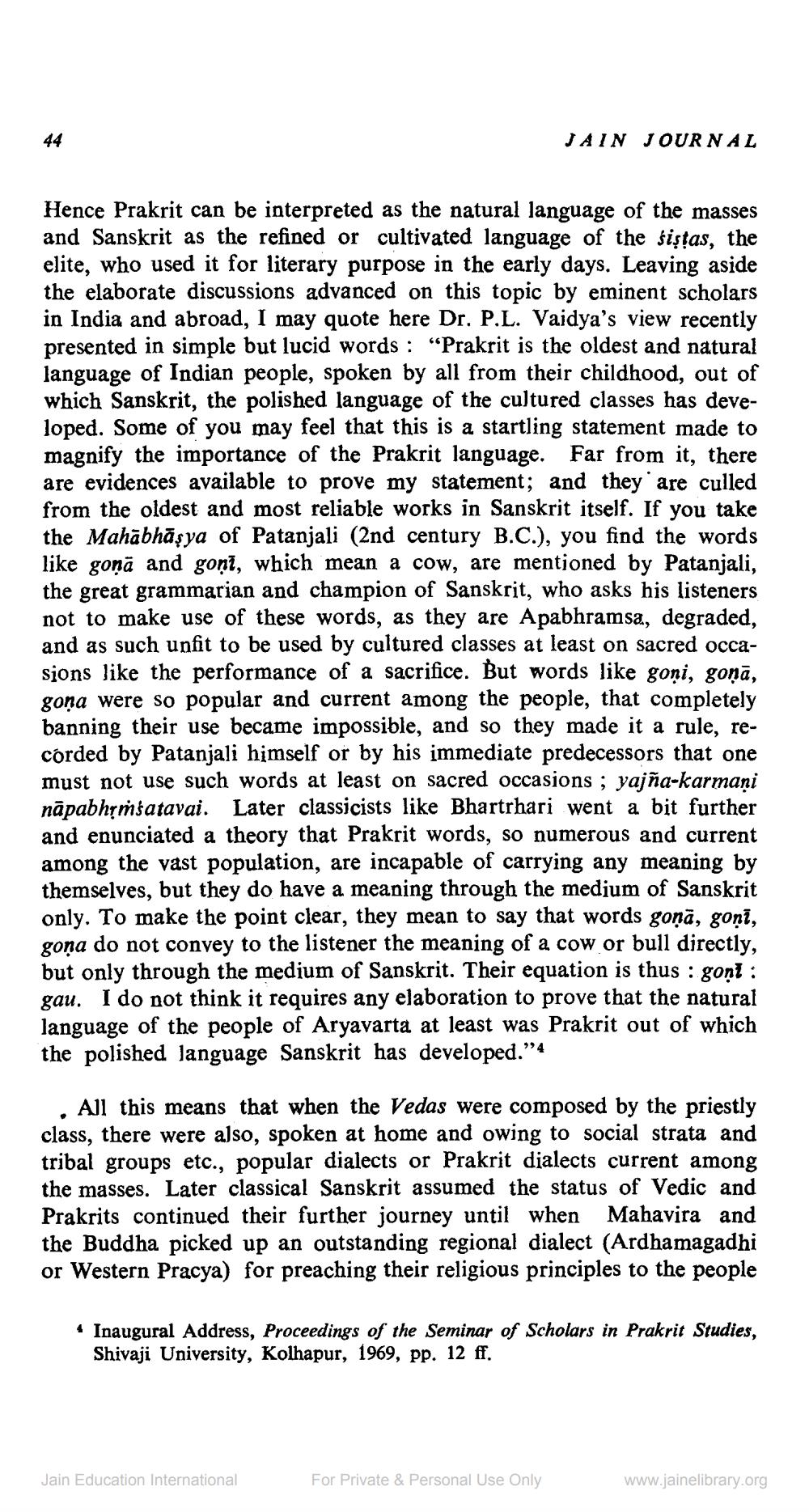Book Title: Jain Journal 1979 10 Author(s): Jain Bhawan Publication Publisher: Jain Bhawan Publication View full book textPage 7
________________ 44 Hence Prakrit can be interpreted as the natural language of the masses and Sanskrit as the refined or cultivated language of the sistas, the elite, who used it for literary purpose in the early days. Leaving aside the elaborate discussions advanced on this topic by eminent scholars in India and abroad, I may quote here Dr. P.L. Vaidya's view recently presented in simple but lucid words: "Prakrit is the oldest and natural language of Indian people, spoken by all from their childhood, out of which Sanskrit, the polished language of the cultured classes has developed. Some of you may feel that this is a startling statement made to magnify the importance of the Prakrit language. Far from it, there are evidences available to prove my statement; and they are culled from the oldest and most reliable works in Sanskrit itself. If you take the Mahābhāṣya of Patanjali (2nd century B.C.), you find the words like goṇā and goni, which mean a cow, are mentioned by Patanjali, the great grammarian and champion of Sanskrit, who asks his listeners not to make use of these words, as they are Apabhramsa, degraded, and as such unfit to be used by cultured classes at least on sacred occasions like the performance of a sacrifice. But words like goni, goṇā, gona were so popular and current among the people, that completely banning their use became impossible, and so they made it a rule, recorded by Patanjali himself or by his immediate predecessors that one must not use such words at least on sacred occasions; yajña-karmani nāpabhṛmsatavai. Later classicists like Bhartrhari went a bit further and enunciated a theory that Prakrit words, so numerous and current among the vast population, are incapable of carrying any meaning by themselves, but they do have a meaning through the medium of Sanskrit only. To make the point clear, they mean to say that words goṇā, goṇī, gona do not convey to the listener the meaning of a cow or bull directly, but only through the medium of Sanskrit. Their equation is thus: goni: gau. I do not think it requires any elaboration to prove that the natural language of the people of Aryavarta at least was Prakrit out of which the polished language Sanskrit has developed."4 JAIN JOURNAL • All this means that when the Vedas were composed by the priestly class, there were also, spoken at home and owing to social strata and tribal groups etc., popular dialects or Prakrit dialects current among the masses. Later classical Sanskrit assumed the status of Vedic and Prakrits continued their further journey until when Mahavira and the Buddha picked up an outstanding regional dialect (Ardhamagadhi or Western Pracya) for preaching their religious principles to the people Inaugural Address, Proceedings of the Seminar of Scholars in Prakrit Studies, Shivaji University, Kolhapur, 1969, pp. 12 ff. Jain Education International For Private & Personal Use Only www.jainelibrary.orgPage Navigation
1 ... 5 6 7 8 9 10 11 12 13 14 15 16 17 18 19 20 21 22 23 24 25 26 27 28 29 30 31 32 33 34 35 36 37 38 39 40 41
